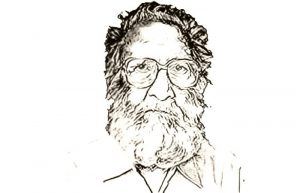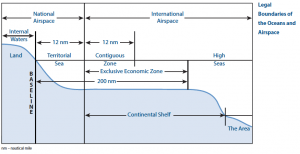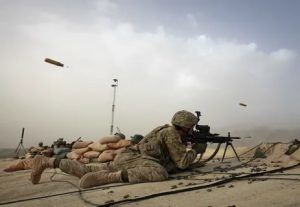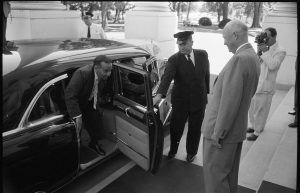Now that, Imran Ahmed Khan Niazi has been elected the Prime Minister of Pakistan in the last national election of Pakistan,it is conjectured that during his governance as Prime Minister, there might be changes in Pakistan’s foreign policy. We can, therefore, think that opportunities may knock on our door to build bridges between Bangladesh and Pakistan. And it would be wise for Bangladesh to seize this opportunity.
In 1970, there were fumes of freedom and there was a revolt in the then Pakistan state. But the existing scenario is completely otherwise. At that time Bangladesh was not an independent state whereas, now it is a separate independent state. At that time there was an urge for freedom among the people. The goal was to achieve independence.
On the contrary, now the goal is to salt down the acquired freedom. And there is no alternative of making allies to cherish this dream of a successful independent state. And in this regard, our historical background and geographical location are two major factors. We must consider these two while choosing allies.
Today’s Bangladesh is not a by-product of former British-India; Rather it was separated from former Pakistan. If we think that the creation of former Pakistan is as India, it becomes unreasonable, but there is no clue about the separated independent existence of Bangladesh. Bangladesh has historically been an integrated part of the Pakistan movement. And present-day Pakistan and Bangladesh have been internationally recognized state for twenty-three years at that time.
Moreover, indeed Pakistan has been a member of the United Nations. And the world witnessed the separation of that state into two different states, apparently fueled by the Indian government. But India fell flat on their very own face. Their motive to take over newly born Bangladesh could not be accomplished.
Here the US played an important role to thwart India’s diplomatic moves regarding the issue. When the war broke out, Indira Gandhi promised the then US President Richard Nixon that she would not fight. She added that she wanted a peaceful authorization to the problems that had emerged in East Bengal (he did not use the term East Pakistan) through negotiations. But she failed her words and participated in the war on the advice of the Soviet Union. India and the Soviet Union signed a 20-year friendship agreement on August 9, 1971. Which was a military agreement. This treaty pushed Indira Gandhi to gather courage and stand against Pakistan later on attacking.
On 12 October 1971, the US Ambassador who was staying in Delhi informed the Indian Prime Minister that if India did not stop providing aid to the freedom fighters, Pakistan would attack India from the west. On 3 December 1971, the Pakistan Air Force bombed Amritsar, Avantipur, Ambala, Agra, Jotpur, Pathankot, Srinagar and Uttarlai in India. Concurrently the Pak army attacked the Indian cities of Sulemanki, Khemkaran, Chamb and Punch. And thus The Pak-India war of 1971 was triggered out.
The then Indian president deployed professionals troopers in East Pakistan in the disguise of Mukti Bahini. As a result, Pakistan invaded India. India spoke of the liberation forces at that time but couldn’t trust enough to hand over arms to them. Because Indira Gandhi feared that there might be infiltration of the Pro Chinese communists. And If they are issued weapons, it will ultimately reach the pro-Chinese communists’ hand which would eventually cause a severe problem for India. It was a dilemma for India. So she was dispatching professional Indian soldiers in disguise of Mukti Bahini. Earlier, on April 13, 1971, Chinese Prime Minister Chou En lai said that the People’s Republic of China was committed to protecting Pakistan’s integrity from foreign invasion. India became ambiguous about China. It was presumed that China had afforded to infuse their people into the liberation forces.
On December 4, 1971, the United States propounded for a ceasefire to the UN Security Council. But the Soviet Union vetoed it. The United States then put forth the same proposal to the UN General Assembly for the second time. This proposal was passed by a huge vote. But India refused to accept it. On December 13, US President Richard Nixon ordered the US Seventh Fleet to sail to the Bay of Bengal. On December 14, the United States passed another resolution in the Security Council calling for an end to the battle. But this time the Soviet Union vetoed. The US Seventh Fleet kept advancing towards the port of Chittagong. Rumors circulated in Calcutta that US Marines were about to land at the port of Chittagong. The rumor kept strengthening. There also another bruit spread like fumes in the trams and buses that Kolkata would be occupied by the US Marines. Fear of the US invasion spread across India. This panic seized both the civilians and the Indian Army. Siddique Salik was the PRO of former Pakistan Commander Lieutenant General Amir Abdullah Khan Niazi. He said in his book that Niazi went to discuss the issue with the US Consul General in Dhaka before surrendering to India. The US Consul General in Dhaka wanted to know the opinion of the US State Department. The US State Department then confirmed and opined that Niazi would surrender to India. But there was fact that 93,000 Pakistani soldiers will be taken to India and later released.
Under US pressure, India had to agree to withdraw Indian troops from Bangladesh and allow 24,000 Bengali-speaking troops from Pakistan to come to Bangladesh. Of which, 1100 belonged to the top brass of the army. However, this addition added to the army of Bangladesh had made it stronger, feasible and efficient enough to hedge the newly achieved freedom and sovereignty of the country.
In her autobiographical essay, Indira Gandhi states that on December 16, 1971, Pakistani troops were forced to surrender to the Indian Army. But the case was otherwise. Only the Chief of Army Staff of the Eastern Command in Pakistan surrendered to the Chief of Army Staff of the Eastern Command of India. The entire Pakistani army did not surrender to the Indian army. India unilaterally declared a ceasefire on the western battlefield. As a result, the Pak-India war of 1971 came to an end. The 1971 war was referred to as the Pak-India War in the Shimla Treaty. Not a single delegate of Bangladesh was even called to the Shimla conference as a spectator. The Shimla Treaty has been signed between Pakistan and India. Not with Bangladesh.
Nevertheless, Bangladesh didn’t protest India’s this behavior. There is a buzz that PM Imran Khan is interested in initiating the development of diplomatic relation between the countries. If the buzz is true, Bangladesh should take it into consideration. Because India has always been intending to dominate Bangladesh. But it has not been possible due to many adverse circumstances in international politics. But India still does not seem to have given up. India wanted to control Bangladesh just like Kashmir. During the 1971 war, DP Dhar (Dar), PN Haksar, TN Kaul, PN Dhar (Dar) were special counsellors to Indira Gandhi. All of them were the descendants of Kashmir. DP Dhar and PN Haksar were mainstream activists of the pro-Moscow Communist Party in Kashmir in their early lives. DP Dhar pushed Indira Gandhi to sign the Indo-Soviet alliance Agreement. Indira Gandhi’s great-grandfather Gangadhar Nehru was a native of Kashmir. Later, he settled in Allahabad, India. Indira Gandhi had a special reverence for Kashmiris. But their pieces of advice couldn’t sustain in Bangladesh’s context, eventually, since the people of Bangladesh in that period were very sensitive to political and independence issues.
On the other side, the U.S.A concurrently had another plan regarding Bangladesh which consequently refrain Bangladesh from being dominated by India. Another meaning of which was that Bangladesh indirectly fell into the sphere of Soviet influence. The reason I’m stating this is that some so-called intellectuals of our country want to identify India as the savior of Bangladesh but the fact is otherwise. We are still not clear what Sheikh Mujib intended to. He was very ambiguous regarding the issue.
Let me clarify it with some facts; Though Awami League-led the 1970 election from Eastern Pakistan, it also chose candidates from other provinces of Pakistan. They did not get elected but got some votes. The Awami League has never claimed to be a provincial party(East Pakistan). So I see Sheikh Mujibur Rahman saying in his speech on March 7, I am the leader of the majority party of Pakistan rather than just saying East Pakistan. So it can be presumed that he wanted to be the Prime Minister of indiscrete Pakistan, not just a provincial prime minister. Although at the same time he was saying that, “I do not want to be the Prime Minister” which seems to be a diplomatic statement essential in politics.
Sheikh Mujib’s Unfinished Autobiography’ was published in 2012. In it, he supported Two-Nations theory. So he himself took part in the movement for the establishment of Pakistan as a student leader. He further said in his autobiography that although Bengali-speaking Muslims are Bengali in terms of language, there is a sense of Muslim individuality in them. Both language and this sense of individuality should be taken into account in identifying the ethnicity of Bengali-speaking Muslims. Sheikh Mujib can’t be held ideologically an anti-Pakistan activist. Journalist Anthony Mascarenhas in his book Bangladesh A Legacy of Blood (Chapter 2) states that Sheikh Mujib told him in London on January 8, 1972 that he (Sheikh Mujib) did not want to completely sever ties with present day Pakistan rather wanted to sustain a beneficiary ally. Considering the above facts and stats, I do believe that it wouldn’t be contrasting to Sheikh Mujib’s Ideology of developing the relation between these two countries.
This article is first published as translation in a blog by translator Mahmudul Rifat.






